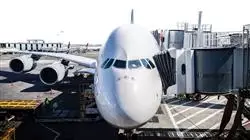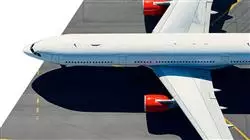University certificate
The world's largest faculty of engineering”
Introduction to the Program
A Postgraduate diploma that will take you in 6 months to have the most complete knowledge on Engineering Applied to Airport Infrastructure"

The increase in passenger demand, the constant movement of people between countries, as well as violent acts against civil aviation have completely changed the concept of airport infrastructure in recent decades. Thus, creating such facilities or making modifications to them implies a deep knowledge on the part of engineers of the operation and needs of the sector.
Thus, to be aware of the national and international regulations in force, to understand the airport administration and management, attending at all times to the real needs of the industry requires a mastery of this subject that is achievable through this 6-month Postgraduate diploma.
This is an advanced program with a theoretical-practical approach that will lead students from day one to delve into the importance of airports within the transport system, to delve into the basic elements of infrastructure, planning, design based on passenger flow, the regulatory framework and the culture of security.
All of this is complemented by innovative didactic material based on video summaries of each topic, in-focus videos, specialized readings and case studies, accessible 24 hours a day, from any digital device with an Internet connection. In addition, thanks to the Relearning method, students can easily progress through the syllabus, consolidating the most important concepts in an agile way.
Undoubtedly, a unique learning opportunity through a flexible university program, which does not involve attendance at a center, nor does it have scheduled classes. In this way, the graduates will be able to manage their study time more freely and reconcile their personal and professional daily activities with an avant-garde education.
A program that gives you everything you need to know about putting a new airport into service"
This Postgraduate diploma in Engineering Applied to Airport Infrastructure contains the most complete and up-to-date program on the market. The most important features include:
- Development of case studies presented by experts in Aeronautical engineering
- Graphic, schematic, and practical contents with which they are created, provide scientific and practical information on the disciplines that are essential for professional practice
- Practical exercises where self-assessment can be used to improve learning
- Its special emphasis on innovative methodologies
- Theoretical lessons, questions to the expert, debate forums on controversial topics, and individual reflection assignments
- Content that is accessible from any fixed or portable device with an Internet connection
This university program will allow you to design an airport infrastructure from start to finish, taking into account all the elements required"
The program’s teaching staff includes professionals from sector who contribute their work experience to this educational program, as well as renowned specialists from leading societies and prestigious universities.
Its multimedia content, developed with the latest educational technology, will provide the professionals with situated and contextual learning, i.e., a simulated environment that will provide an immersive education programmed to learn in real situations.
The design of this program focuses on Problem-Based Learning, by means of which the professionals must try to solve the different professional practice situations that are presented throughout the academic course. For this purpose, the students will be assisted by an innovative interactive video system created by renowned experts.
A Postgraduate diploma that will allow you to understand the planning, administration and operation of an airport"

Thanks to the Relearning method, you will advance progressively and naturally through the syllabus, consolidating the key concepts in a simple way”
Why study at TECH?
TECH is the world’s largest online university. With an impressive catalog of more than 14,000 university programs available in 11 languages, it is positioned as a leader in employability, with a 99% job placement rate. In addition, it relies on an enormous faculty of more than 6,000 professors of the highest international renown.

Study at the world's largest online university and guarantee your professional success. The future starts at TECH”
The world’s best online university according to FORBES
The prestigious Forbes magazine, specialized in business and finance, has highlighted TECH as “the world's best online university” This is what they have recently stated in an article in their digital edition in which they echo the success story of this institution, “thanks to the academic offer it provides, the selection of its teaching staff, and an innovative learning method aimed at educating the professionals of the future”
A revolutionary study method, a cutting-edge faculty and a practical focus: the key to TECH's success.
The most complete study plans on the university scene
TECH offers the most complete study plans on the university scene, with syllabuses that cover fundamental concepts and, at the same time, the main scientific advances in their specific scientific areas. In addition, these programs are continuously being updated to guarantee students the academic vanguard and the most in-demand professional skills. In this way, the university's qualifications provide its graduates with a significant advantage to propel their careers to success.
TECH offers the most comprehensive and intensive study plans on the current university scene.
A world-class teaching staff
TECH's teaching staff is made up of more than 6,000 professors with the highest international recognition. Professors, researchers and top executives of multinational companies, including Isaiah Covington, performance coach of the Boston Celtics; Magda Romanska, principal investigator at Harvard MetaLAB; Ignacio Wistumba, chairman of the department of translational molecular pathology at MD Anderson Cancer Center; and D.W. Pine, creative director of TIME magazine, among others.
Internationally renowned experts, specialized in different branches of Health, Technology, Communication and Business, form part of the TECH faculty.
A unique learning method
TECH is the first university to use Relearning in all its programs. It is the best online learning methodology, accredited with international teaching quality certifications, provided by prestigious educational agencies. In addition, this disruptive educational model is complemented with the “Case Method”, thereby setting up a unique online teaching strategy. Innovative teaching resources are also implemented, including detailed videos, infographics and interactive summaries.
TECH combines Relearning and the Case Method in all its university programs to guarantee excellent theoretical and practical learning, studying whenever and wherever you want.
The world's largest online university
TECH is the world’s largest online university. We are the largest educational institution, with the best and widest online educational catalog, one hundred percent online and covering the vast majority of areas of knowledge. We offer a large selection of our own degrees and accredited online undergraduate and postgraduate degrees. In total, more than 14,000 university degrees, in eleven different languages, make us the largest educational largest in the world.
TECH has the world's most extensive catalog of academic and official programs, available in more than 11 languages.
Google Premier Partner
The American technology giant has awarded TECH the Google Google Premier Partner badge. This award, which is only available to 3% of the world's companies, highlights the efficient, flexible and tailored experience that this university provides to students. The recognition as a Google Premier Partner not only accredits the maximum rigor, performance and investment in TECH's digital infrastructures, but also places this university as one of the world's leading technology companies.
Google has positioned TECH in the top 3% of the world's most important technology companies by awarding it its Google Premier Partner badge.
The official online university of the NBA
TECH is the official online university of the NBA. Thanks to our agreement with the biggest league in basketball, we offer our students exclusive university programs, as well as a wide variety of educational resources focused on the business of the league and other areas of the sports industry. Each program is made up of a uniquely designed syllabus and features exceptional guest hosts: professionals with a distinguished sports background who will offer their expertise on the most relevant topics.
TECH has been selected by the NBA, the world's top basketball league, as its official online university.
The top-rated university by its students
Students have positioned TECH as the world's top-rated university on the main review websites, with a highest rating of 4.9 out of 5, obtained from more than 1,000 reviews. These results consolidate TECH as the benchmark university institution at an international level, reflecting the excellence and positive impact of its educational model.” reflecting the excellence and positive impact of its educational model.”
TECH is the world’s top-rated university by its students.
Leaders in employability
TECH has managed to become the leading university in employability. 99% of its students obtain jobs in the academic field they have studied, within one year of completing any of the university's programs. A similar number achieve immediate career enhancement. All this thanks to a study methodology that bases its effectiveness on the acquisition of practical skills, which are absolutely necessary for professional development.
99% of TECH graduates find a job within a year of completing their studies.
Postgraduate Diploima in Engineering applied to airport infrastructure
At TECH Global University, we are committed to the qualification of highly trained professionals in the field of engineering applied to airport infrastructures. Our Postgraduate Diploima program is designed to provide you with the knowledge and skills necessary to meet the challenges and demands of today's airport industry. Through our online classes, you will be able to access quality study with experts in the field, within a flexible digital environment, allowing you to adapt your learning to your schedule and needs. One of the outstanding benefits of our program is the constant updating of the contents, which are at the forefront of the latest trends and technological advances in the field of engineering applied to airport infrastructures. We will provide you with the knowledge you need to understand the technical, economic and environmental challenges facing modern airports, as well as the solutions and best practices to effectively address them.
Specialize in airport infrastructure engineering.
In the Postgraduate Diploima in Engineering applied to airport infrastructure program at TECH Global University, you will address topics such as planning and design of airport infrastructures, safety and operations management at airports, resource optimization and sustainability in airport infrastructure, among others. In addition, you will have access to cutting-edge tools and techniques used in the airport industry, which will allow you to develop innovative projects and apply practical solutions in real situations. Become an expert in engineering applied to airport infrastructures with the Postgraduate Diploima program taught by TECH Global University, a global leader in online education. Get the degree you need to excel in the workplace and contribute to the development of safe, efficient and sustainable airport infrastructures. enroll today and start transforming your professional future!







